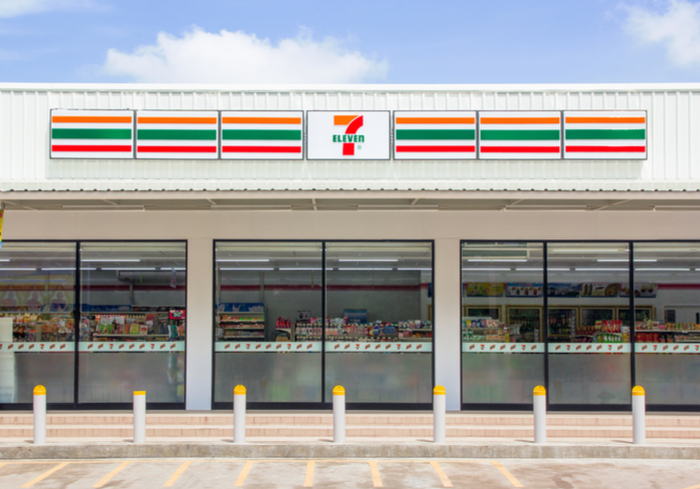
When “Uncle Johnny” Jefferson Green realized that grocery stores weren’t always open when consumers needed household staples, he sensed an opportunity.
Green, who ran the Southland Ice Dock in Dallas, realized his customers needed to buy products like bread, milk and eggs after grocery stores had closed. Since his ice dock was open 16 hours a day, he decided to expand its offerings to include some of those staples — and more.
After Green’s innovative merchandising concept, stores opened with various names — “bantams,” “dairy stores” and “vest-pocket grocery stores,” for example — but Green established a brand that has stood the test of time. The name? 7-Eleven.
As one might guess, the name came from the store’s hours — 7:00 a.m. to 11:00 p.m. But, in 1963, the company’s stores would start adopting later hours. After a 7-Eleven location near the University of Texas got swamped with customers after a football game, the store had to stay open later than 11:00 p.m. The store’s sales did so well that night, the location decided to stay open 24 hours a day, 7 days a week. And so, the company’s other stores followed suit.
Today, 7-Eleven is the largest convenience store chain in the world. Seven & i Holdings Co., Ltd., which is the parent company of 7‑Eleven, Inc., operates more than 65,000 stores in 18 countries worldwide.
Gas Stations
Fast forward to the 1990s, when convenience stores (c-stores) became associated with gas stations. At that time, self-service gasoline became more popular and reduced the number of service stations. As a result, more convenience stores began selling gasoline.
While self-service gasoline did make the gas station experience quicker for people who were in a rush, pay at the pump was not available yet. So c-store owners had a captive market: Consumers, who had to walk into their stores to pay for their gas, saw all the merchandise for sale while they were there.
This opportunity made gas stations with convenience stores more profitable than those without them. With margins for fuel at a remarkably low percentage — 50 percent of the gross margin — gas stations needed c-stores to drive profit.
In contrast to gas, in-store purchases drive profits with a margin of 28 percent for merchandise and 54 percent for food service. Grocery stores, by comparison, have gross margins of 27 percent.
Despite the markup and options to pay at the pump, some consumers who drive up to the pump still visit convenience stores. And of those customers who visit a c-store after pumping gas, 42 percent make a purchase.
Through a convenience store, consumers can shop for a selection of goods designed to be enjoyed immediately: 83 percent of the items sold inside a store are bought to be consumed within one hour, such as beverages or snacks.
Amazon Reinvents the C-Store
But the future of the convenience store may not involve a gas station at all. Enter Amazon Go, a brick-and-mortar convenience store the eCommerce retailer opened last week in Seattle.
Upon entering the store, which, in some ways is a mix between a c-store and a Whole Foods, customers can choose from a range of food and beverages, from pre-made salads and sandwiches to beer and wine. In addition, shelves are also stocked with produce, meat and Amazon meal kits.
Building on the history of convenience, Amazon instituted a checkout-free experience — one without cashiers. Consumers do all their shopping via mobile phone — through an app specifically — and customers get to leave with what they’ve bought without having to wait to check out. Upon exiting the store, shoppers receive a receipt via phone. Amazon calls it “Just Walk Out.”
The process works through cameras and sensors that communicate with mobile devices held by consumers’ record purchases. But the technology may need refining. During her story, a CNBC reporter noticed that Amazon Go had not charged her for a container of vanilla yogurt she picked up in the store. “I think I just shoplifted??,” CNBC reporter Deirdre Bosa wrote on Twitter with the hashtag #freestuff.
The Future May Be Mobile
With competitors like Amazon Go on the horizon, 7-Eleven is exploring new ways for customers to pay and receive their goods digitally. “Click-and-collect, on-demand delivery, frictionless payment, the now factor,” 7-Eleven Inc. CEO Joseph DePinto told Convenience Store News. “Our opportunity is to connect the digital to the physical store locations.”
And, with the potential for self-driving mini-stores from Robomart, perhaps 7-Eleven will come to consumers’ driveways too.